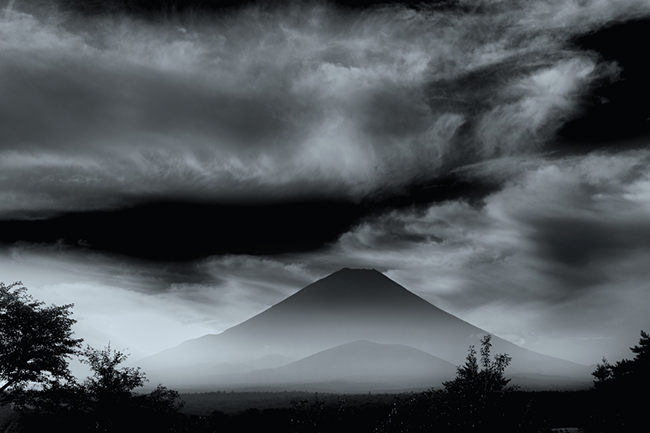Motoaki Tojo is a Mount Fuji photographer who finds inspiration in the dignified and majestic aspects of both nature and music. His artistic vision is deeply influenced by his admiration for Mozart’s “Jupiter Symphony,” which he sees as a parallel to the grandeur of Mount Fuji. Tojo’s work seeks to capture the nobility and grace of the iconic mountain, much like the refined beauty found in Mozart’s symphony.

For Tojo, Mount Fuji is not just a natural landmark but a symbol of artistic nobility. He believes that art should embody a sense of dignity and elegance, much like Mount Fuji and the “Jupiter Symphony.” This perspective sets him apart from many contemporary artists who might have different ideals. Tojo’s dedication to this vision is evident in every photograph he takes, aiming to elevate the natural beauty of Mount Fuji to a form of high art.
One of Tojo’s notable photographs was taken at Lake Shoji, a location known for its stunning views of Mount Fuji. The photo captures the mountain surrounded by thin clouds, adding a layer of grace to its already majestic presence. The composition highlights the serene and almost ethereal quality of the scene, reflecting Tojo’s intention to portray Mount Fuji as a noble and dignified subject.
Tojo’s approach to photography is meticulous and thoughtful. He spends considerable time observing Mount Fuji from various angles and under different weather conditions, waiting for the perfect moment when the mountain’s nobility shines through. The thin clouds around Mount Fuji in his Lake Shoji photograph are not just a background element; they are integral to conveying the mountain’s grace and majesty. Tojo’s patience and dedication to capturing these fleeting moments demonstrate his deep respect for his subject.
Tojo’s work bridges the gap between nature and art, emphasizing the inherent nobility of natural landscapes. He sees Mount Fuji as more than just a mountain; it is a source of inspiration that embodies the ideals of beauty and dignity. This perspective is somewhat unique in the world of landscape photography, where the focus is often on dramatic or picturesque scenes. For Tojo, the true artistry lies in capturing the understated elegance and timeless grace of Mount Fuji.
The influence of Mozart’s “Jupiter Symphony” on Tojo’s work cannot be overstated. Just as Mozart’s symphony is celebrated for its complexity and refinement, Tojo aims to infuse his photographs with a similar sense of sophistication. The symphony’s dignified and uplifting qualities resonate with Tojo’s vision of Mount Fuji, reinforcing his belief that art should aspire to a higher standard of beauty and grace.
In an era where many artists seek to challenge conventions and explore new forms of expression, Tojo’s focus on nobility and dignity might seem traditional. However, it is this very commitment to timeless ideals that makes his work stand out. Tojo’s photographs are not just images of a mountain; they are expressions of a deeply held belief in the power of art to inspire and elevate.
Tojo’s photographs of Mount Fuji invite viewers to see the mountain through his eyes. They encourage a deeper appreciation of nature’s beauty and the ways in which it can be captured and celebrated through art. By sharing his vision, Tojo hopes to inspire others to look at the world with a renewed sense of wonder and respect for its inherent nobility.

